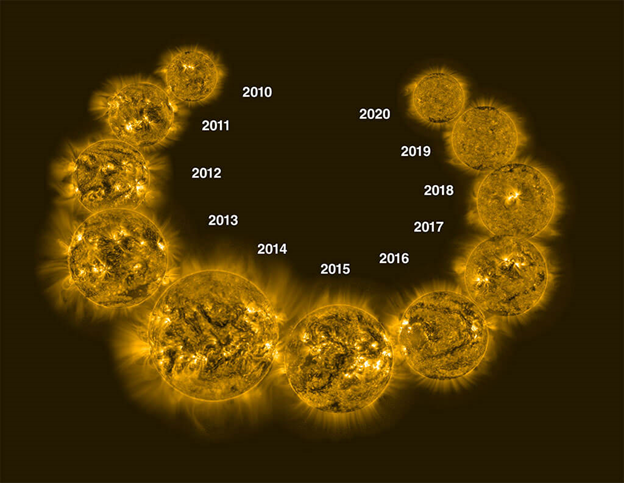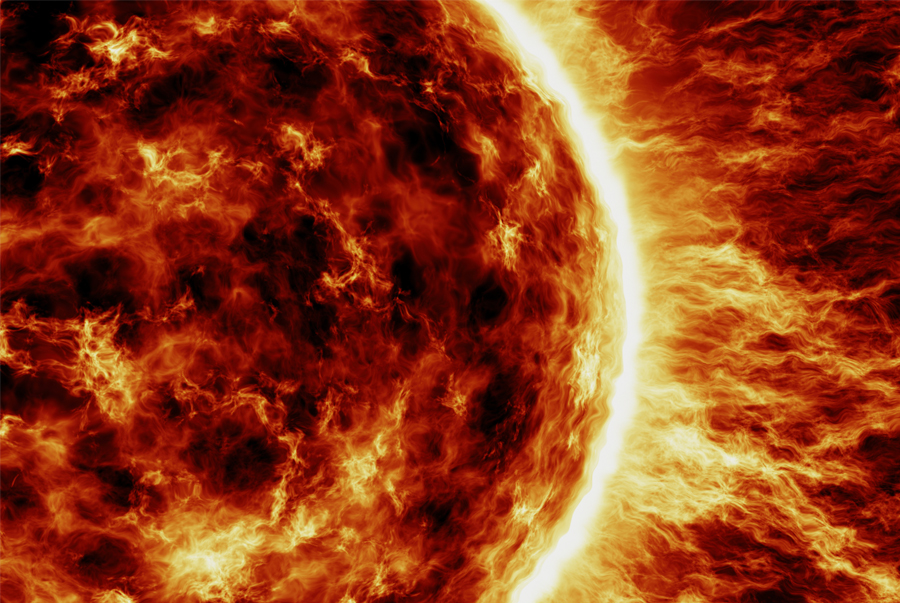Shafqat / April 13, 2023
Hi readers, do you remember the above titled blog that I posted on April 3rd, 2023 ”? if not, no problem
you can still read the blog at
The crux of that blog is that,
“The planet earth has seen many intriguing and alluring events ever since its birth but for the gigantic ball of hydrogen and helium floating nearly a hundred million miles away (The Sun), it is just a breakdown or a fault in its timeline as it has marked the beginning of 2023 with pulsating activity like sending some powerful solar flares towards the planet Earth”.
Dear reader, be prepared to face the consequences, whatever they are? (hope you would have re-called by now)
Solar flares are eruptions of electromagnetic radiation from the Sun when magnetic fields in some regions get very intense. The Sun goes through an 11-year cycle (remember? I mentioned this in one of my blogs on climate change) wherein its poles turn over, with North and South poles switch places consequently, the magnetic field move to align itself to the changed poles. It takes about another 11 years for the Sun’s North and South poles to flip back again to the previous position.
This solar cycle generates some activity on the sun’s surface by producing sunspots which are caused by the Sun’s magnetic fields. As the magnetic field changes, so does the amount of activity on the sun’s surface (Please see figure below) which is :
The evolution of the Sun in extreme ultraviolet light from 2010 through 2020, as seen from the telescope aboard Europe’s PROBA2 spacecraft. Credit: Dan Seaton/European Space Agency (Collage by NOAA/JPL-Caltech).
The figure shows the start of an 11-year solar cycle with the start of 2010. As years pass, the magnetic field changes with the maximum intensity reaches around 2014, start shrinking again and reaches to the minimum around 2020 after 11 years. A new cycle start again and if 2010 was previously North pole, in the new cycle, it will become South pole and cycle will begin considering 2020 as North pole: the maximum magnetic activity of this cycle is expected in the year 2024-25.

However, ever since the sun has reached its near solar cycle maximum (2023 in the current year), it has become most unstable with its volatility at its peak. Hence several sunspots are expected to erupt simultaneously during this period (2023-2025) which may include a deadly solar storm to hit the planet earth. Intense magnetic fields can even slow down convection (the movement caused within a fluid by the tendency of hotter and less dense material to rise, and colder, denser material to sink under the influence of gravity, which consequently results in transfer of heat) which drops the temperature of the Sun’s surface, giving it a darker appearance called a sunspot.
Keeping this in mind, please read the following post published in “Science” by Ritu Singh on November 26th, 2023, and titled:
“NASA warns solar storm might hit earth today (26th November which is already elapsed) amid increased sun activity.”
The post further described that in the past week the sun has shown increased activity, with a surge in sunspots and the launch of several coronal mass ejections (CMEs) on a daily basis (it was also speculated in Pakistan that solar flare will hit Pakistan during that week but luckily, the week passed un-noticed).
Coronal Mass Ejections (CMEs) are large expulsions of plasma and magnetic fields from the Sun’s corona. They can eject billions of tons of coronal material and carry an embedded magnetic field that is stronger than the background solar wind interplanetary magnetic field (IMF) strength. CMEs travel outward from the Sun at the speeds ranging from slower than 250 kilometers per second (km/s) to as fast as near 3000 km/s.
According to NASA, one of these coronal mass ejections (CMEs) may be on a collision course with earth which can cause a geomagnetic storm and disturbance of the Earth’s magnetic field and of the atmosphere by solar plasma.
The head of the Solar Physics group at Aberystwyth University in the UK however says, “When a large plasma storm erupts from the sun and carries a magnetic field oriented in an opposite direction to Earth’s magnetic field, there could be a “perfect and a larger geomagnetic storm.”
Geomagnetic storm refers to the disruptions to the Earth’s magnetic field caused by solar emissions whose intensity is graded on a scale of G1 to G5. G1 storms are the weakest on the scale and can occur on a regular basis, numerous times each month.
The G1 geomagnetic storm is unlikely to cause any damage to life on earth but can still affect power grids and impact some satellite functions such as those used for GPS systems and mobile devices.
The spaceweather.com, has speculated that minor G1-class geomagnetic storms are possible late on November 25th through 26th (both dates have gone) when two CMEs might scratch earth’s magnetic field. Both CMEs were thrown into space by magnetic filaments erupting from the sun earlier this week.
That’s the update for now dear readers. Although the storm has not yet created any significant disturbances on the planet earth, the speculations are there which can cause disturbances of any intensity at any time. Be vigilant. Keep your alternate electricity power system (UPS, generators etc.,) ready and store enough water as power shutdowns can be for longer hours. Please don’t leave electrical appliances plugged in as it can be damaged by unexpected surge in power, especially unplug your computers after use because these are extremely sensitive to power disturbances. This is my personal experiences.
See you next week.
Take care,
Bye,





